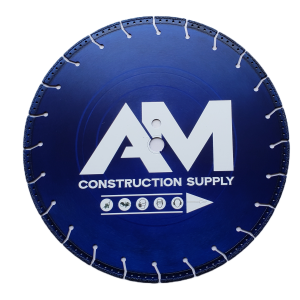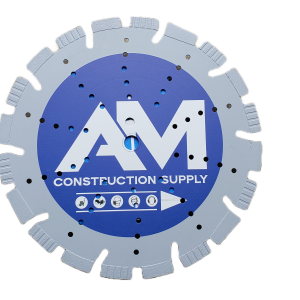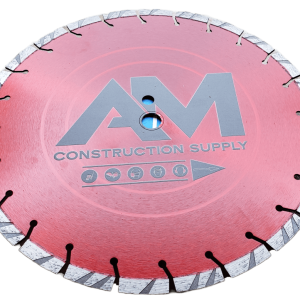Proper blade cooling during cutting can make or break your project. Picture this: a hot blade melting through material versus a cool, precise cut – the difference is stark. Ensuring the right cooling mechanisms are in place is not just a box to tick; it’s the secret sauce for top-notch results. From enhancing blade longevity to improving cut quality, the importance of proper blade cooling cannot be overstated. In this post, we delve into why the presence of this seemingly small detail holds immense significance in the world of cutting materials.
Key Takeaways
- Proper blade cooling is crucial for efficient and precise cutting operations, ensuring longer blade life and improved cut quality.
- Regularly check and adjust machine settings to optimize blade cooling, considering factors like blade speed, feed rate, and material being cut.
- Select the appropriate coolant type based on the material being processed, such as water-soluble coolants for ferrous metals and oil-based coolants for non-ferrous materials.
- Maintain coolant application systems to prevent clogging or uneven distribution, which can lead to inadequate cooling and affect cutting performance.
- Monitor coolant mix ratios closely to maintain the right balance for effective heat dissipation and lubrication during cutting processes.
- Conduct routine flood system maintenance to prevent contamination, blockages, or pump failures that could compromise blade cooling efficiency and overall cutting results.
Understanding Blade Cooling
Why Cool Blades
Blade cooling is essential for efficient cutting as it prevents heat buildup, ensuring optimal performance. Proper cooling significantly impacts blade performance, enhancing its longevity and effectiveness.
Cooling and Cutting Performance
Cooling plays a vital role in enhancing cutting rates and improving cut finish. It also contributes to extending the blade’s lifespan by reducing wear and tear. Coolants provide a balance between evaporative cooling and lubrication, ensuring optimal cutting performance.
Benefits of Proper Cooling
Proper blade cooling directly correlates with increased cutting rates, as it facilitates smoother cuts. Coolants are crucial in preventing heat buildup that can damage blades over time. Effective cooling not only extends the blade’s life but also improves the overall quality of the cut finish.
Machine Considerations
Types of Cutting Machines
There are various types of cutting machines available in the market, each catering to specific needs. CNC machines are known for their precision and automated operation, making them ideal for intricate cuts. On the other hand, laser cutting machines use a high-powered laser beam to cut through materials with extreme accuracy.
- CNC machines: precise and automated
- Laser cutting machines: high accuracy with laser beams
When selecting a cutting machine, it’s essential to consider the material being worked on. Plasma cutters, for instance, are excellent for cutting through metal, while water jet cutters are preferred for materials sensitive to heat.
Machine Cooling Capabilities
The efficiency of cutting processes heavily relies on the machine’s cooling system. Flood-applied coolant delivery systems play a crucial role in maintaining proper blade temperature during operations. These systems ensure that the blade remains cool, preventing overheating and prolonging its lifespan.
- Flood-applied coolant delivery systems: maintain proper blade temperature
- Prevent overheating and extend blade lifespan
Moreover, misting systems are instrumental in reducing frictional heat generated during cutting. By spraying a fine mist of coolant directly onto the cutting area, these systems effectively dissipate heat, enhancing both the quality of cuts and the longevity of blades.
- Misting systems: reduce frictional heat
- Enhance cut quality and blade durability
Material Considerations
Different Materials, Different Needs
Metallic components and parts have varying cutting requirements based on their material properties. The hardness of a material significantly impacts the cutting speeds required for efficient machining. When selecting a coolant, it is crucial to consider the material type being worked on.
Understanding how different materials react to cutting processes is essential in choosing the right cooling methods. For instance, softer metals may require less aggressive cooling compared to harder metals. The presence of inclusions within a material can also influence the coolant selection process.
- Material properties influence cutting requirements
- Material hardness impacts cutting speeds
- Material type affects coolant selection
Impact of Material on Cooling
The cooling process during cutting is directly affected by the material being worked on. Hard and work-hardened metals have specific cooling requirements due to their properties. These materials often generate more heat during cutting, necessitating efficient cooling methods.
When dealing with hard or work-hardened metals, it becomes crucial to implement effective cooling strategies to prevent overheating and maintain tool longevity. In contrast, easily machinable metals may not require as intensive cooling measures due to their lower heat generation during machining.
- Material properties affect the cooling process
- Hard and work-hardened metals have specific cooling needs
- Easily machinable metals have lower cooling demands
Coolant Application Systems
Types of Systems
Coolant application systems vary, catering to different cutting operations. Flood systems with guide blocks are effective in providing a continuous flow of coolant over the cutting edge. These systems ensure proper cooling during heavy-duty machining processes. On the other hand, misting systems are more suitable for small saws, offering a fine mist of coolant to lubricate and cool the blade during cutting.
- Flood systems with guide blocks
- Misting systems for small saws
System Efficiency
Efficient coolant application systems play a crucial role in enhancing cutting operations. Flood systems excel in capturing excess coolant and efficiently returning it for reuse, minimizing wastage and ensuring consistent cooling. The lubricity offered by misting systems reduces frictional heat, prolonging tool life and maintaining cutting precision.
- Importance of efficient coolant application
- Flood systems capturing and reusing coolant
- Lubricity provided by misting systems
Selecting the Right Coolant Type
Coolant Varieties
When it comes to coolant varieties, it’s essential to understand the options available for cutting operations. Different types of coolants offer unique properties and benefits that cater to specific cutting needs. Soluble oil coolants, a common choice, provide excellent lubrication and cooling properties, enhancing tool life and surface finish. These coolants are versatile and work effectively with various materials, making them a popular option in many machining applications.
On the other hand, semisolid coolants offer distinct advantages for specific materials. Their unique composition provides enhanced cooling capabilities while minimizing mist formation, creating a safer working environment. Semisolid coolants are particularly beneficial for challenging materials like titanium or high-temperature alloys, where precise temperature control is crucial for successful cutting operations.
-
Pros of Soluble Oil Coolants:
- Excellent lubrication properties
- Versatile application across different materials
- Enhances tool life and surface finish
-
Pros of Semisolid Coolants:
- Enhanced cooling capabilities
- Minimizes mist formation for a safer working environment
- Ideal for challenging materials like titanium or high-temperature alloys
Matching Coolant with Material
Selecting the right coolant based on the material being machined is paramount for achieving optimal cutting performance. Each material has specific cutting requirements, and choosing a coolant with suitable properties is crucial for efficient machining processes. The compatibility between coolant properties (such as viscosity, lubricity, and thermal conductivity) and material characteristics directly impacts cutting efficiency and tool longevity.
The impact of coolant lubricity on cutting performance cannot be overstated. Proper lubrication not only reduces friction between the tool and workpiece but also helps dissipate heat effectively during the cutting process. This results in improved chip formation, reduced tool wear, and enhanced surface quality of the machined part. Matching the right coolant with the material ensures smooth chip evacuation, prevents built-up edge formation, and prolongs tool life.
- Key Points:
- Choose coolant based on material-specific requirements
- Optimal compatibility between coolant properties and material characteristics
- Lubricity plays a vital role in reducing friction and dissipating heat efficiently
Coolant Mix
Preparing the Mix
Proper coolant mix preparation is crucial for effective cutting operations. To begin, ensure you follow the manufacturer’s guidelines meticulously. Incorrect concentrations can lead to inefficient cooling and compromised cutting quality. Maintaining the correct coolant concentration is key to preventing issues like tool wear and workpiece damage during cutting processes.
Understanding the significance of proper coolant mixing enhances overall cutting efficiency. The mixture’s composition directly influences its cooling properties, affecting heat dissipation during cutting. This process not only safeguards your equipment but also ensures precise and clean cuts on various materials.
Adjusting the Mix Ratio
Exploring the importance of adjusting coolant mix ratios based on different materials is vital for optimal performance. Different materials require specific cooling levels to prevent overheating and maintain cutting precision. By adapting mix ratios accordingly, you can customize cooling effectiveness, prolong tool life, and enhance overall cutting results.
Understanding how adjustments in mix ratios impact cutting performance is essential for achieving desired outcomes. A well-balanced mixture promotes smoother cuts, reduces frictional heat buildup, and prevents material distortion. It’s crucial to find the right balance that suits the material being cut to maximize efficiency and minimize potential damage.
Moreover, learning about the optimal mix ratios for various cutting applications is key to achieving consistent results. Each material may demand a unique coolant concentration to ensure successful cutting without compromising quality or tool longevity. Experimenting with different ratios allows you to fine-tune your cutting process and achieve superior results across a range of materials.
Flood System Maintenance
Regular Check-ups
Regular check-ups are crucial to ensure proper blade cooling during cutting processes. By conducting routine inspections, operators can detect any potential issues early on. Monitoring coolant levels and conditions is vital for optimal system performance.
- Inspecting the coolant system regularly helps in maintaining its efficiency.
- Monitoring coolant levels ensures that the system is adequately filled for effective cooling.
- Checking the condition of the coolant helps in identifying any contaminants or degradation.
Preventive Measures
Preventive measures play a key role in guaranteeing efficient blade cooling. Proactive maintenance is essential to prevent unexpected breakdowns or malfunctions during operations. Regular checks and adjustments are critical in avoiding cooling-related problems.
- Implementing a regular maintenance schedule helps in preventing sudden breakdowns.
- Adjusting coolant flow rates based on cutting conditions enhances blade cooling efficiency.
- Cleaning filters and nozzles regularly prevents clogging and ensures consistent coolant flow.
Troubleshooting Saw Coolants
Common Issues
Blade cooling is crucial during cutting operations to prevent overheating and maintain blade integrity. Inadequate sawing fluid supply can lead to increased friction and heat generation, affecting cutting performance. When the coolant level is low, blades can wear out faster due to excessive heat buildup.
Improper coolant flow can cause uneven cooling across the blade surface, leading to inconsistencies in cutting quality. Insufficient cooling also results in thermal expansion of the blade material, affecting its dimensional stability. Neglecting to monitor and adjust the cooling system can result in poor cut finish and reduced blade lifespan.
Solutions and Fixes
To address common blade cooling issues, ensure a consistent and sufficient supply of sawing fluid throughout the cutting process. Properly adjust the flow rate to maintain optimal cooling efficiency and prevent overheating. Regularly inspect the coolant system for leaks or blockages that may disrupt the flow.
Implement effective fixes for cooling-related problems by checking for clogs or obstructions in the coolant lines that hinder fluid circulation. Clean or replace filters regularly to prevent debris buildup that can impede coolant flow. Consider upgrading to high-performance coolants for enhanced heat dissipation.
Prevent recurring cooling issues by establishing a routine maintenance schedule for the entire cooling system. Conduct regular inspections of hoses, fittings, and pumps to ensure proper functionality. Train operators on best practices for monitoring coolant levels and adjusting flow rates as needed.
Final Remarks
You’ve now grasped the critical role of proper blade cooling in cutting operations. From understanding the importance of coolant types to maintaining your flood system, you’re equipped to optimize your cutting processes. Remember, a well-cooled blade ensures precision and efficiency in your cuts, enhancing both the quality of your work and the lifespan of your equipment.
As you delve into implementing these insights, don’t hesitate to experiment with different coolant mixes or seek expert advice for troubleshooting. Your dedication to mastering blade cooling techniques will undoubtedly set you apart in the world of cutting operations. Keep cool, keep cutting!
Frequently Asked Questions
What is the significance of proper blade cooling during cutting?
Proper blade cooling during cutting is crucial to prevent overheating, reduce friction, and prolong blade life. It also helps maintain cutting precision and efficiency by ensuring the material is adequately cooled during the cutting process.
How do machine considerations impact blade cooling?
Machine considerations such as horsepower, speed settings, and coolant delivery mechanisms directly influence blade cooling effectiveness. Machines with optimized cooling systems and appropriate power levels ensure consistent and efficient cooling for enhanced cutting performance.
Why are material considerations important in relation to blade cooling?
Material considerations like hardness, thickness, and composition affect the heat generated during cutting. Understanding the material properties helps determine the ideal coolant type, concentration, and application method to achieve optimal blade cooling and prevent thermal damage.
What role do coolant application systems play in blade cooling?
Coolant application systems control the distribution of coolant onto the cutting area to regulate temperature and lubricate the blade. Properly designed systems ensure uniform coolant coverage, preventing heat buildup on the blade edge and enhancing overall cutting quality.
How can selecting the right coolant type improve blade cooling efficiency?
Choosing the correct coolant type based on factors like material being cut and environmental conditions enhances heat dissipation, reduces tool wear, and improves chip evacuation. The right coolant minimizes friction, extending tool life while maintaining consistent cutting performance.





